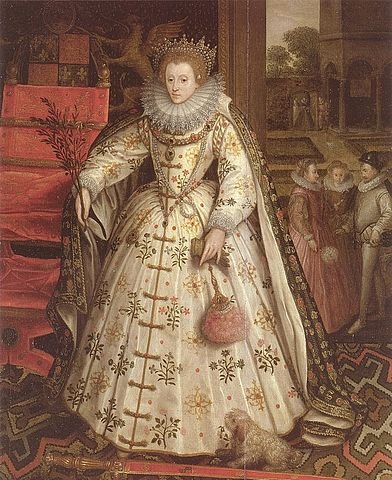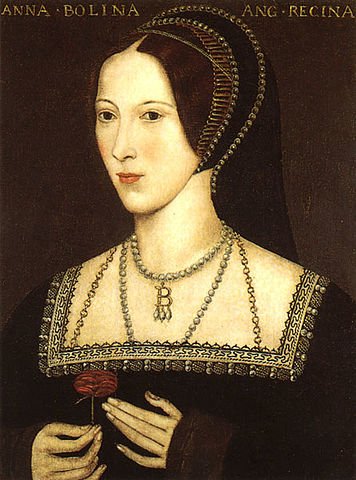Elizabeth I's Beloved Locket Ring
She held the realm’s finances in her grasp and the crown jewels round her neck or on her head. Still, there were only two pieces of jewelry that Queen Elizabeth I was reliably said to have never removed: her coronation ring, which she considered her “wedding” ring, and her ruby and pearl locket ring. Shrouded in mystery, this latter ring tells us as much about the queen’s heart as does the former.
The ring is generally called the Chequers ring because its permanent home is now at the British Prime Minister’s country home, Chequers, and under the authority of its trustees. In 2008, Prime Minister Gordon Brown lent out several pieces of art from Chequers to the museum at country house Compton Verney. Kathleen Soriano, head of exhibitions at Compton Verney, said of the ring, “It’s a very moving piece because it’s so delicate and small and evokes the sense of the story. It’s a compelling object.”
Just what is that story evoked?
Most sources place the first appearance of the locket ring at 1575. Although some assert that the queen commissioned it, there is no trail or definitive provenance for that claim. Traditionally, lockets are gifts. Inside might be a portrait of a lover or a child or perhaps a lock of hair from someone who had passed on. The idea is to keep someone close to heart who is likely far removed by death, convention, politics, or sea. The idea, too, is to shield or shroud the identity of the loved one by clasping and keeping the locket closed.
English locket jewelers Lily & Will tell us, “When Elizabeth I wore a locket ring ... it marked a new beginning for the locket. It started to rise in popularity as Elizabeth I gave gifts of jewel-encrusted lockets to many of her favourite loyal subjects—Sir Francis Drake being one of them.” The Scottish National Museum holds a locket with portraits of Mary, Queen of Scots, and her son James, given to a trusted servant on the eve of her execution.
Then, who will be found inside the ring so cherished by Queen Elizabeth? Another royal executed mother and her beloved only child. When opened, the Chequers ring reveals two portraits that face one another. One is clearly Queen Elizabeth, seemingly in her early forties, neatly fitting with 1575. The second portrait is widely understood to be her mother, Queen Anne Boleyn.
Because there is no direct provenance, there has been speculation that the portrait could be of the young Queen Elizabeth herself or Queen Katherine Parr, Elizabeth’s stepmother. It’s unlikely that the queen would have worn two portraits of herself throughout her life; in any case, there would have been no need for those portraits to be kept hidden. Although Elizabeth bore tender affection for Parr, the picture within does not resemble Parr, nor does the French hood worn by the subject fit in with the French hoods known to have been worn by Parr. However, it perfectly matches the French hoods Anne Boleyn was well known for.
The British Museum says of Anne Boleyn: “Of the mid-sixteenth century representations of her, the most reliable must be the tiny miniature set into a ring of about 1575 which belonged to her daughter, Queen Elizabeth I (The Chequers Trust; see ‘Elizabeth’ exhibition catalogue edited by Susan Doran, London, The National Maritime Museum, 2003, no.7). This likeness comes from the same source as the painting in the National Portrait Gallery.”
The NPG portrait is widely understood to have been painted by John Hoskins the Elder (c.1590-1664/5). However, Boleyn’s principal biographer, Eric Ives, believes it is “more likely that Hoskins had access to an earlier image of the kind from which the NPG image originated.” Perhaps there was one early portrait or sketch upon which Hoskins and the painter of the locket miniature based their work. The long oval face in the portrait of the Chequers ring very much matches Anne’s “Most Happy” portrait medal, which remains the only undisputed contemporary likeness of the queen. It also seems a close match to the Holbein sketch of Queen Anne held in the Royal Collection.
Although Elizabeth likely could not remember what her mother looked like, there were those at her court old enough who would remember, and there were also those who still held quiet affections for and perhaps an illustration of Queen Anne. And just like that, the generosity of fiction allowed me to consider who might have loved and understood Elizabeth enough to risk giving her a ring with a portrait of her beloved but taboo mother inside.
Main Photo of ring: Longmore-Etheridge, Ann. “The Chequers ring closed to hide the portraits of Anne Boleyn and Elizabeth I”. Flickr, March 22, 2023. https://www.flickr.com/photos/60861613@N00/3408484274 . Public Domain.
{Elizabeth I Photo Credit: By Marcus Gheeraerts the Elder - From Polish Wikipedia(usuń) (bież) 17:24, 24 gru 2005 . . Tompot (Dyskusja) . . 572x700 (174842 bajtów), Public Domain, https://commons.wikimedia.org/w/index.php?curid=686188}
{Anne Boleyn Photo Credit: By Unknown - [2], Public Domain, https://commons.wikimedia.org/w/index.php?curid=825024}


